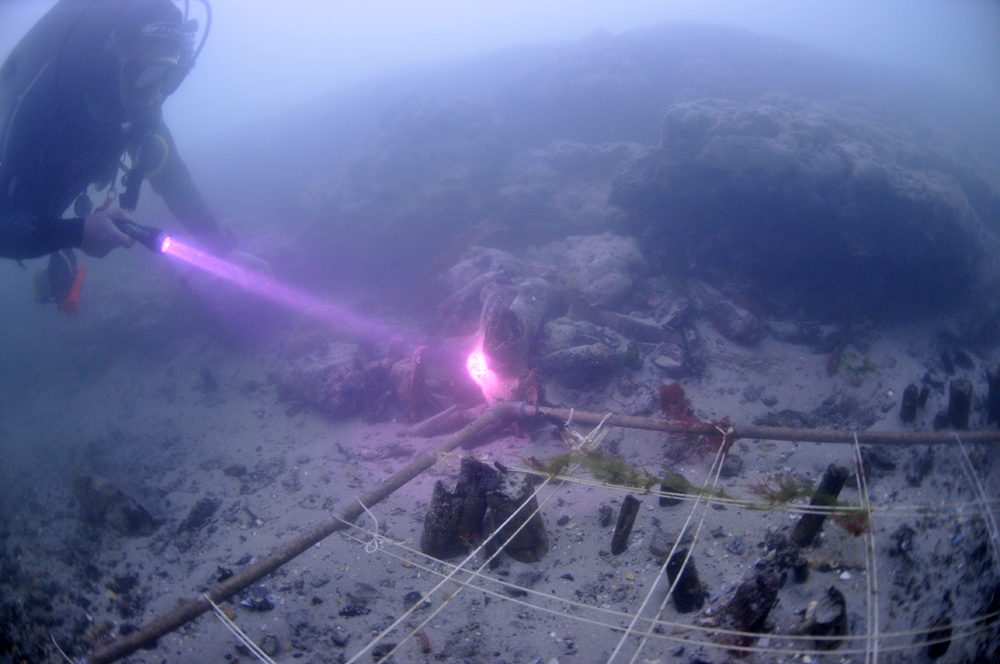On Sunday 16th October, Garry Momber, Director of the Maritime Archaeology Trust, will be speaking at the Isle of Wight Literary Festival.
Garry’s talk will cover two archaeological projects of major interest and importance to the Island:
Bouldnor Cliff: A submerged pre-historic site eleven meters below the surface and approximately 250 metres offshore of Bouldnor, near Yarmouth. Excavations have been continuing at Bouldnor Cliff since the 8,000 year old Mesolithic settlement was first identified in 1999, when a lobster was seen throwing Stone Age worked flints from its burrow. Since then the site has yielded numerous secrets. The material so far recovered has already demonstrated that the technology of the era was 2,000 years ahead of what archaeologists previously believed.
HLF Forgotten Wrecks of the First World War: With over 1000 wartime wrecks along England’s south coast alone, the conflict of WW1 has left a rich legacy and many associated stories of bravery and sacrifice. These underwater memorials represent the vestiges of a vital, yet little known, struggle that took place on a daily basis, just off our shores.
Time: 10.30 – 11.30 am
Location: Northwood House, Isle of Wight
Cost: £8.50

